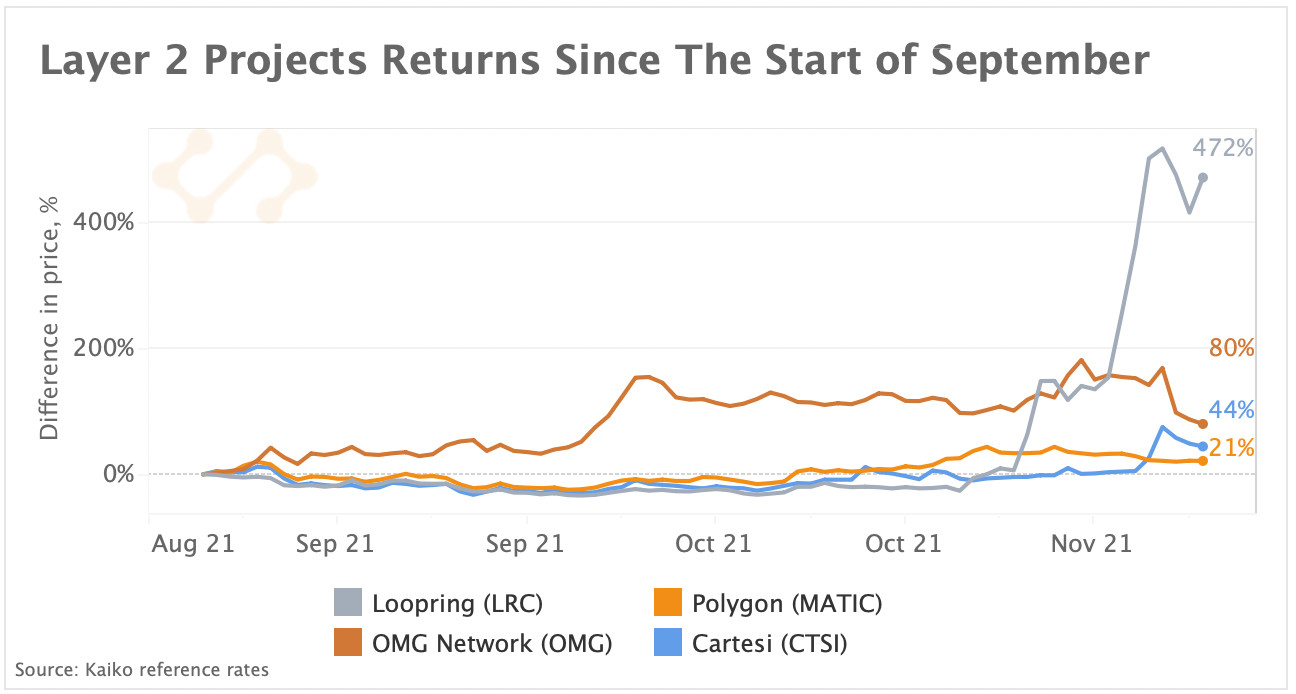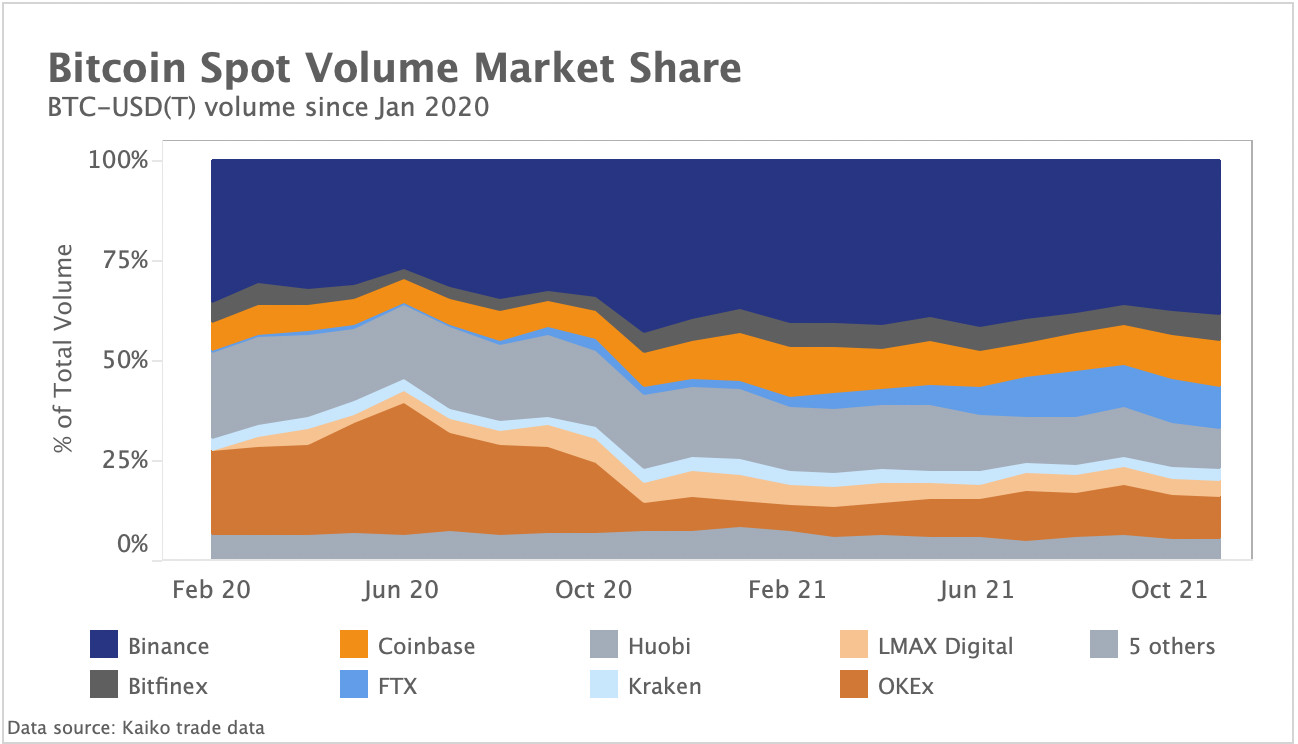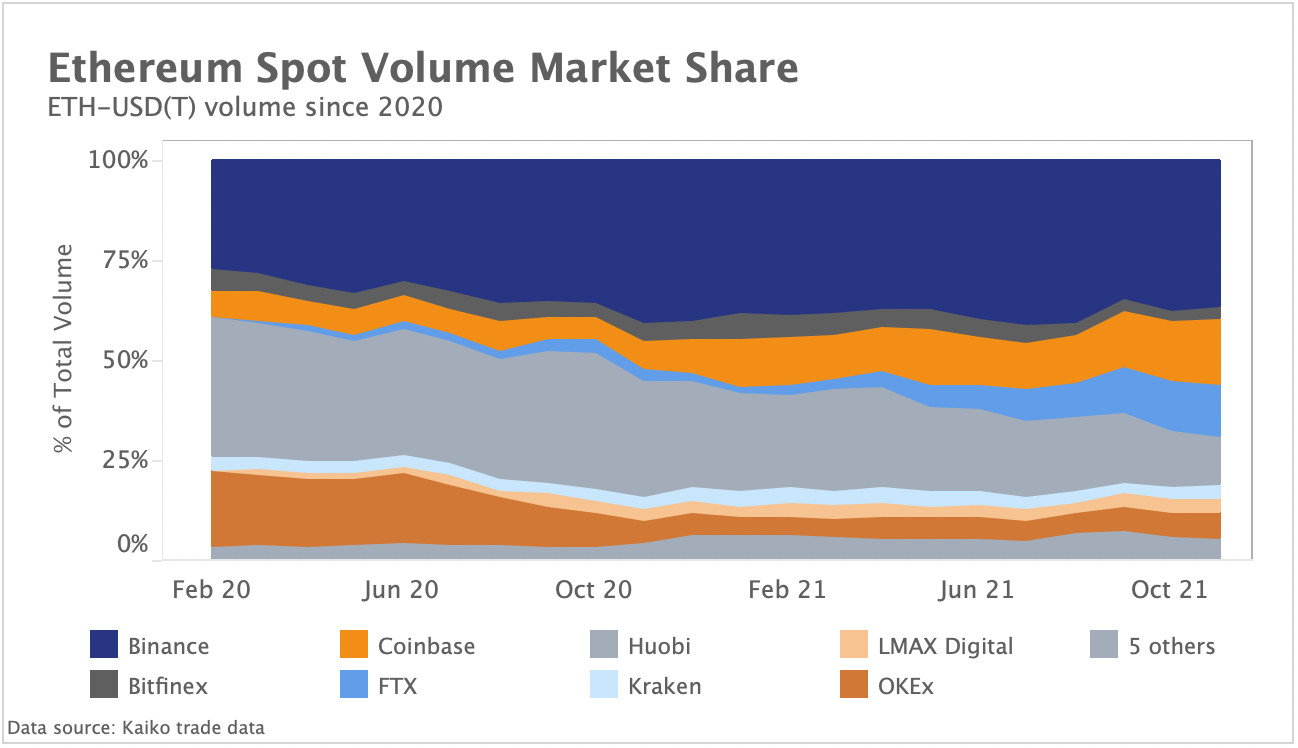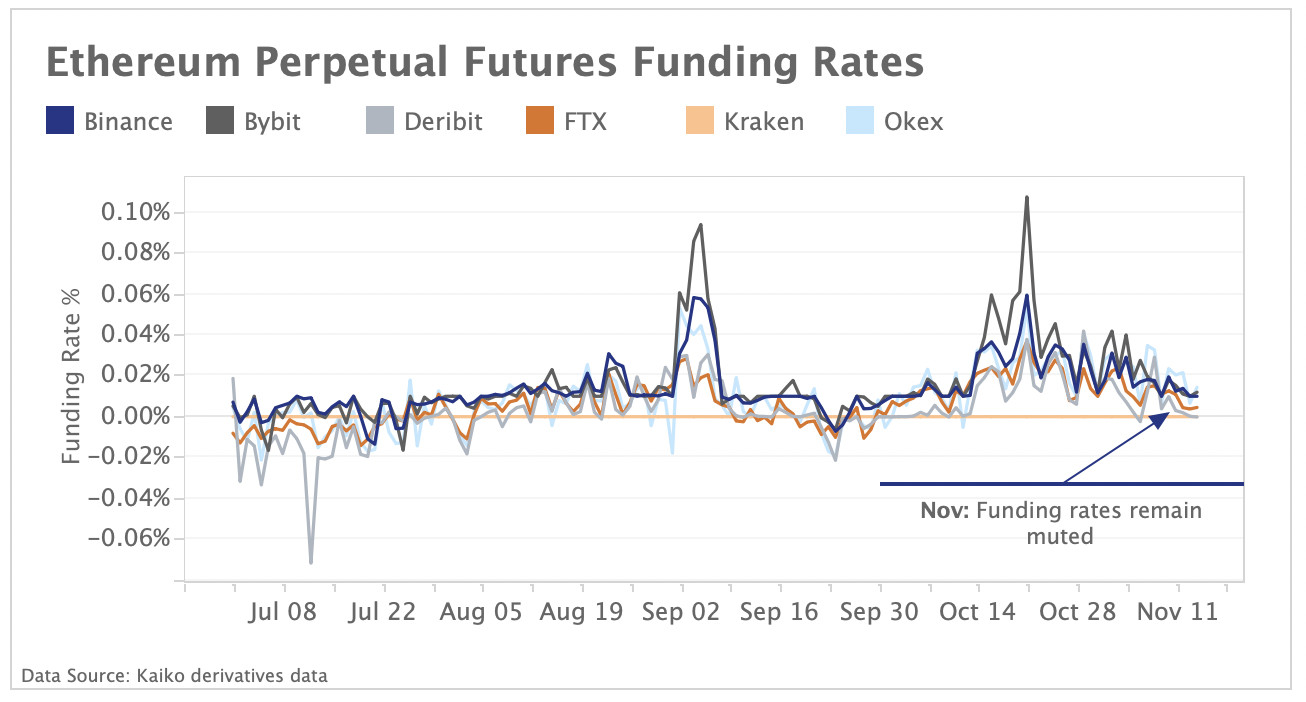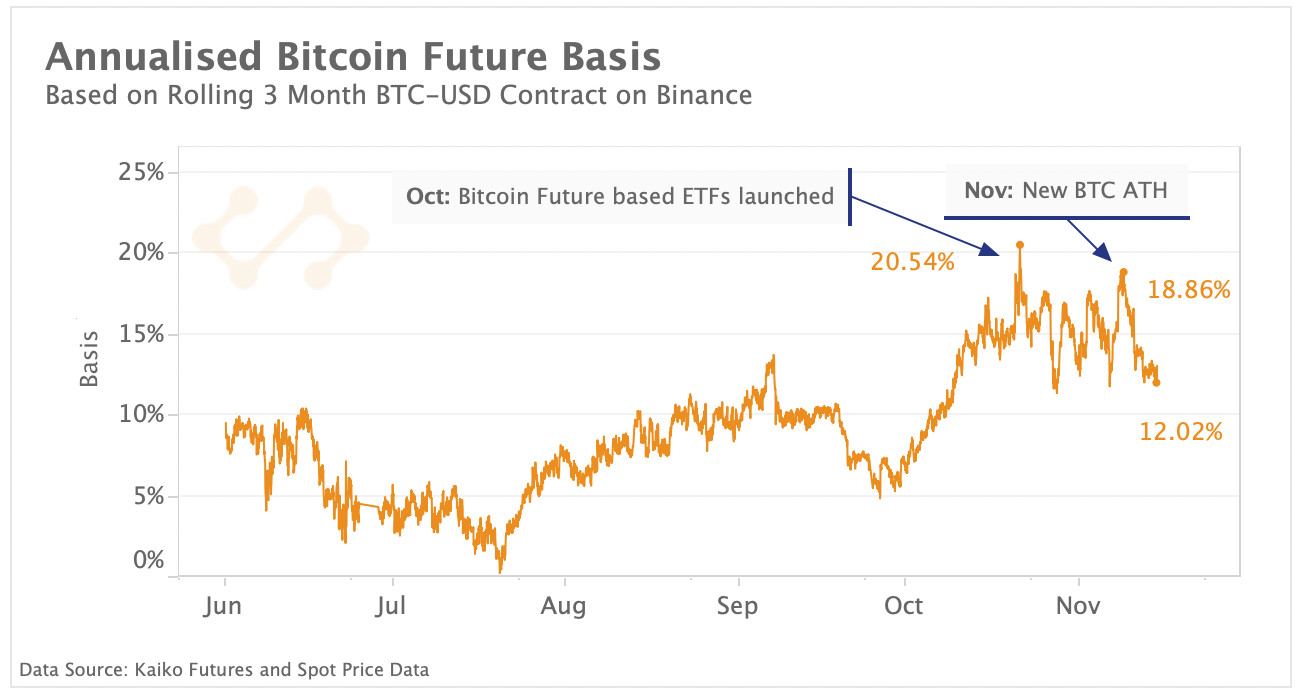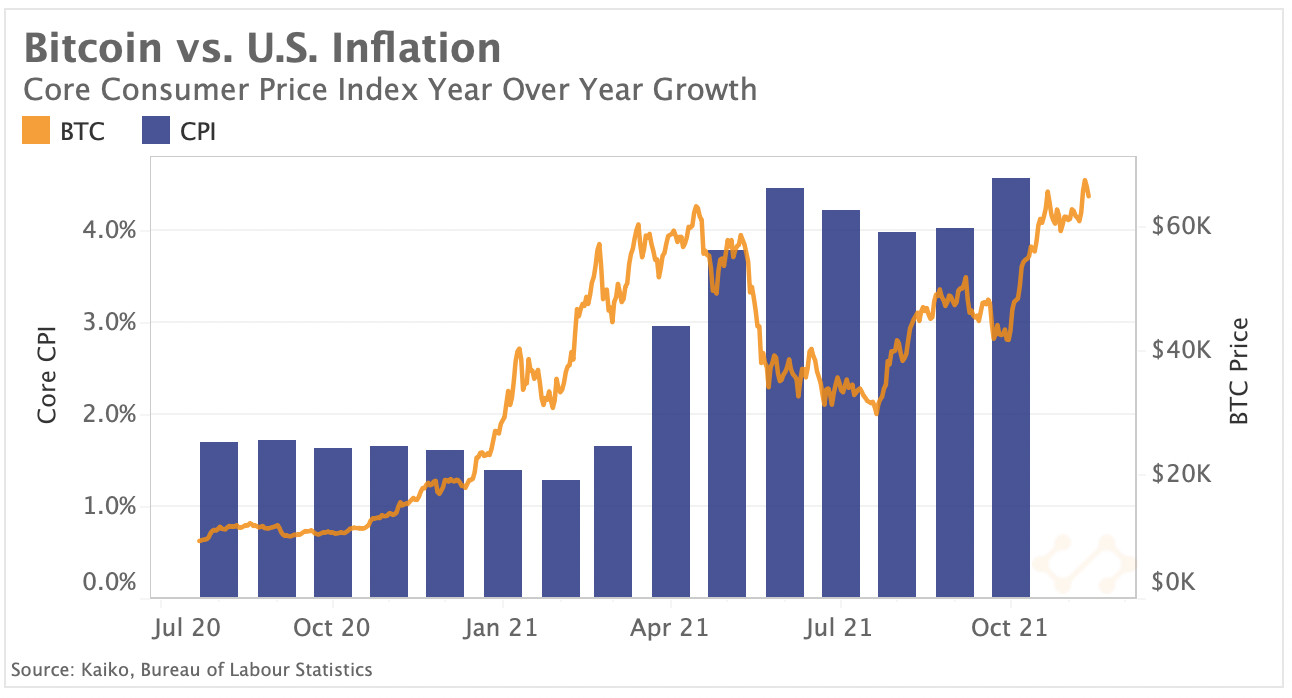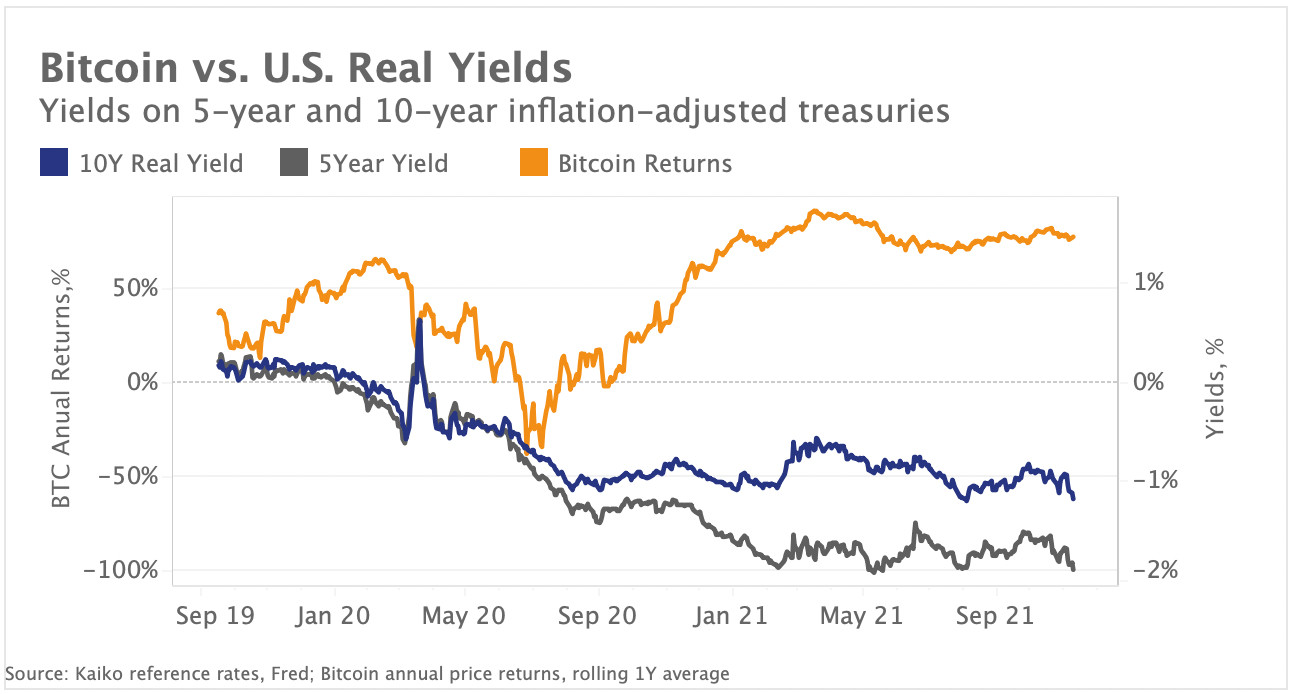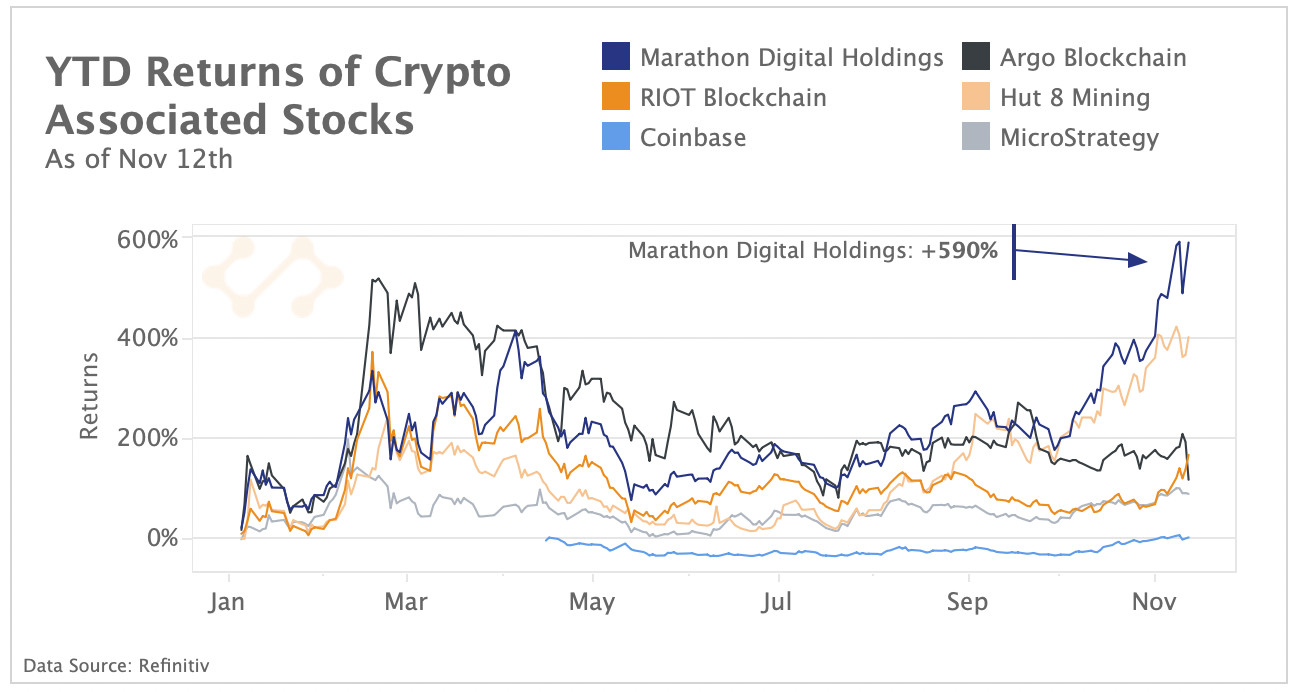A summarizing review of what has been happening at the crypto markets of the past week. A look at trending sectors, liquidity, volatility, spreads and more. The weekly report in cooperation with market data provider Kaiko.
The last 7 days in cryptocurrency markets:
- Price Movements: Bitcoin and Ethereum are trading sideways as turbulence from traditional markets spilled into crypto.
- Volume Dynamics: FTX spot markets continue to gain market share to other exchanges.
- Order Book Liquidity: Price slippage spiked on Coinbase as a series of large sell orders moved the market last week.
- Derivatives: Ethereum open interest hit an all time high but funding rates suggest markets are not overheated.
- Macro Trends: U.S. consumer prices rose at their fastest pace in over 30 years.
Rising macro uncertainties weigh on crypto assets

Bitcoin hit another all time high last week minutes after the release of hotter-than-expected U.S. inflation data. In the hours that followed, Bitcoin reversed course as major U.S. stocks tumbled in a sharp U-turn from risk-on to risk-off sentiment. Despite the activation of the long-awaited Bitcoin Taproot upgrade over the weekend, both Bitcoin and Ethereum traded sideways, ending the week up 0.7% and down 1.4%, respectively. The upgrade, which is the biggest in four years, aims at improving privacy, smart-contract capabilities, and security for the Bitcoin network.
Layer 2 protocols post uneven gains since September
Ethereum’s network congestion and rising transaction fees have boosted layer 2 protocols which promise to solve the network's major scalability issues. Layer 2 protocols use different technological solutions such as sidechains and rollups to execute thousands of transactions per second off-chain before settling the final balance on the base layer. Above, we chart the returns of major layer 2 projects since the beginning of September.
Loopring’s native token LRC is this month's winner, up +472%, fueled by rumours of an alleged NFT marketplace partnership with GameStop. The native token of Cartesi Network, which offers a layer 2 platform for the development of smart contracts, increased by 44%. Polygon Network, another scaling solution, has also grown significantly since the start of the year (+6700% YTD), although its native token has lost steam over the past month.
FTX catches up with the competition
FTX has had a stellar year after raising over $1bn in two funding rounds at a valuation of $25bn. The Bahamas-based exchange which is well known for its innovative derivative products now rivals major exchanges such as Coinbase and Huobi in both Bitcoin and Ethereum spot trading.
Above, we chart BTC-USD(T) volume market share on 13 exchanges to gauge their growth over the past year. We observe that FTX has undergone a big surge in volume, with its market share rising ten-fold from close to zero in early 2020 to 10% as of November 2021. Coinbase’s market share has also risen albeit at a slower pace, from 7% to 12% over the same period while the world’s largest exchange Binance registered a modest growth from 36% to 39%. The biggest declines were from Huobi and Okex which saw their market share shrink two-fold to 10% and 11% respectively. Both exchanges have likely been impacted by China’s crypto crackdown this year as their user base is historically skewed towards the region.
We further chart the Ethereum spot market share and observe similar trends. FTX’s market share rose from near zero to 13% over the past 19 months. Coinbase’s share it ETH-USD(T) trade volumes almost doubled from 7% to 16%. By contrast, Huobi and Okex saw their market shares decrease to 12% and 6%, respectively.
Ethereum open interest sets a new all-time high
Open Interest on Ethereum perpetual futures set a new record on November 9th, as it surged past $7bn on major derivatives exchanges. In line with the broader crypto market trend, open interest has been on a rapid upward trajectory and has doubled since October (charted above). Bullish sentiment is also apparent in options markets, with open interest for Ethereum calls surpassing $1 Million last week. However, despite surging open interest, perpetual future funding rates have been relatively subdued compared to previous peaks.
Above, we chart Ethereum funding rates on seven exchanges and can observe that they have flattened since spiking in October. Elevated funding rates have historically indicated market tops and signal a potential price correction. These two trends suggest that the market is not excessively leveraged this time around.
Futures basis on Binance falls
The 3-month Bitcoin futures contract on Binance traded at an annualised premium of 12%, down from 19% reached after Bitcoin's mid-week all-time high. The futures basis is the difference between the future price and the spot price of an asset and can be a proxy of market sentiment. When the future basis rises it means that futures contracts trade at a premium to spot (contango) and demand for the asset is strong and vice versa. Bitcoin future basis strengthened in October, hitting a multi-month high as markets cheered the launch of the first BTC future-based ETF in the United States. However, it has moved sideways over the past few weeks indicating growing uncertainty about the future direction of Bitcoin. The three-month future contract traded at a significantly higher premium on Binance which has a strong retail reputation in comparison to institution-dominated CME. This suggests that the current uptick may be driven in large part by retail investors.
Inflation uncertainty shakes markets
The U.S. consumer price index (CPI) rose at its fastest pace in 30 years in October (+6.2% y/y), as supply bottlenecks continued pushing prices up. The core CPI - which excludes the volatile food and energy prices and is often seen as a gauge of long-term inflation - was up 4.6% y/y last month. Bitcoin rallied to an all time high minutes after the announcement before retreating in the following hours as risk-off sentiment spilled into crypto markets. Major stocks retreated from record highs as revived fears around monetary policy tightening and China’s property sector woes rattled markets. Above, we chart the core CPI along with Bitcoin prices since the start of the year and observe that they have mostly moved in lockstep.
Real yields remain at historic lows. The Fed’s accommodative monetary policy and surging prices have pushed real (inflation adjusted) yields into negative territory over the past 19 months. Above, we chart the 5-year and 10-year inflation adjusted treasury yields (TIPS) along with Bitcoin rolling annual price returns. Negative real yields present considerable challenges for long-term asset allocators, such as pension funds, in terms of both expected returns and risk. With pension funds flush with cash and growing inflation worries, asset managers may start looking to diversity into riskier alternatives (such as crypto). Last month, the Houston Firefighters' Relief and Retirement Fund became the first U.S. public pension plan to invest directly in Bitcoin and Ethereum.
Crypto mining stocks reach new all-time highs
Shares in Marathon Digital Holdings, one of the largest cryptocurrency mining companies, recently soared to a 6-year high of $74.77 as Bitcoin broke new highs. The share price of crypto mining companies are closely tied to Bitcoin prices since miners earn their revenue through Bitcoin block rewards. Above, we chart the price performance of these mining companies in addition to other blockchain-related stocks such as Coinbase and MicroStrategy and observe that crypto mining stocks have significantly outperformed over the past two months. The Canadian mining company Hut 8, which announced a 767% y/y jump in quarterly earnings, has been another strong performer with over +400% returns. By contrast, returns for the crypto exchange Coinbase have been muted as the exchange failed to meet analyst revenue estimates for Q3 due to lower exchange volumes.


